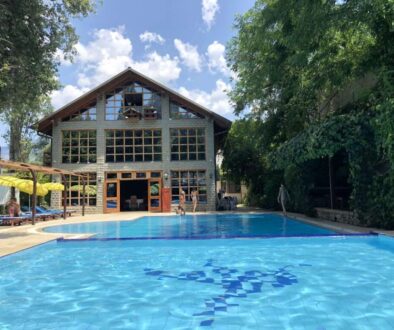Comparing Two Similar Routes: Which One Delivers Better ROI?
Explore the comparison of two similar routes in the pool service industry to determine which one offers a better return on investment and why it matters.
In the competitive world of the pool maintenance business, understanding which routes provide the best return on investment (ROI) can be the key to success. This article delves into the comparative analysis of two similar pool service routes, detailing their financial performance, customer bases, and overall business potential. By examining these aspects, we aim to provide potential investors and entrepreneurs with the insights needed to make informed decisions. With the growing demand for pool services in regions like Florida and Texas, it’s crucial to identify the routes that not only promise immediate income but also sustainable growth over the long term.
The importance of ROI in the pool maintenance industry cannot be overstated. As the industry continues to expand, more entrepreneurs are looking to buy established pool routes to capitalize on an existing customer base and generate revenue from day one. The decision to invest in a pool route requires careful consideration of various factors, including market trends, service quality, and potential for expansion. This article will guide you through these critical elements, helping you understand how to evaluate different pool routes effectively.
Understanding ROI in Pool Routes
Return on investment (ROI) is a crucial metric for evaluating the profitability of any business venture, including pool routes. In essence, ROI measures the gain or loss generated relative to the amount invested. When purchasing a pool route, potential buyers should consider both direct financial returns and the intangible benefits of owning an established customer base.
For example, a pool route with an established customer base in a high-demand area can offer immediate revenue generation. According to industry reports, a well-managed pool route can average between $45 to $150 per service, depending on the size of the pool and the services provided. Hence, if an investor purchases a route that services 30 pools weekly, they could potentially earn between $5,850 to $18,000 monthly. This substantial income underscores the importance of selecting a route that not only has a solid customer base but also positions itself within a market that experiences consistent demand.
Comparing Route A and Route B
Now, let’s dive into a comparison of two similar pool routes: Route A located in a suburban area of Florida and Route B in a bustling urban neighborhood of Texas. Both routes have similar pricing structures and service offerings, but their ROI metrics differ significantly.
Route A: Situated in a suburban community, Route A has a loyal customer base of 50 clients, with an average service fee of $100 per visit. This route has been operational for five years and boasts a steady income stream, with monthly revenues averaging $5,000. The owner has invested in marketing and customer retention strategies, which have contributed to a low customer turnover rate of just 5%. This high rate of customer satisfaction can enhance ROI, as satisfied customers are likely to refer their friends and family.
Route B: Conversely, Route B operates in a densely populated urban area, servicing 60 pools with a similar average fee of $100 per visit. However, despite the higher volume of clients, the route experiences a higher turnover rate, standing at 15%. This means while the monthly revenue can soar to $6,000, the risks associated with customer retention and the potential loss of clients must be considered. Furthermore, Route B requires more aggressive marketing strategies to maintain its customer base, impacting the overall ROI negatively.
Analyzing Customer Base and Market Trends
When evaluating pool routes, the existing customer base plays a pivotal role in determining ROI. An established and loyal customer base can significantly reduce marketing costs and enhance profitability. Route A, with its low turnover rate, showcases the benefits of customer satisfaction and loyalty, allowing for a more stable income.
In contrast, Route B serves as a reminder that while urban areas may offer more clients, they can also lead to challenges in retaining them. Factors such as price competition, the presence of multiple service providers, and changing customer preferences can influence the success of a pool route in a competitive market.
According to recent industry trends, the pool service market is projected to grow, especially in states like Florida and Texas, where year-round pool usage is common. This growth presents an opportunity for both routes, but Route A’s stable customer base and community ties may provide a more secure foundation for growth.
Financial Considerations and Investment Risks
Investing in a pool route should not only be about the immediate income but also the long-term financial sustainability of the business. Route A, with its established clientele and lower churn rate, presents a lower risk for potential investors. On the other hand, Route B’s higher customer turnover indicates that retaining clients could require additional investments in marketing and incentives, which could eat into overall profits.
Moreover, potential buyers should consider the operational costs associated with each route. Route A benefits from lower operational costs due to fewer marketing expenses, while Route B may need to spend significantly to retain its customer base. This factor can influence the overall ROI calculation, making Route A a more attractive investment.
Best Practices for Evaluating Pool Routes
When considering which pool route to purchase, buyers should adopt a structured approach to evaluate their options effectively. Here are some best practices to follow:
- Conduct Thorough Market Research: Understand the local market dynamics, competition, and customer preferences. This knowledge can help in identifying winning routes.
- Assess Customer Retention Rates: Evaluate the turnover rate of existing clients. A lower turnover rate often signals a more reliable income stream.
- Review Financial Performance: Analyze the financial statements of the route, including revenue, costs, and profit margins, to gain insight into its economic viability.
- Seek Expert Guidance: Engage with a reputable pool business broker, such as Tower Business Brokers, to provide insights and streamline the buying process.
- Consider Future Growth Potential: Look for routes that not only perform well currently but also have opportunities for expansion and increased revenue.
Final Thoughts: Choosing the Right Route
In conclusion, comparing two similar pool routes—Route A and Route B—illustrates the importance of thorough analysis when evaluating potential investments in the pool service industry. Route A, with its established customer base and lower risk, presents a more favorable ROI compared to Route B, which, despite higher revenues, carries greater operational and retention challenges.
As the pool maintenance industry continues to thrive, potential investors are encouraged to explore available pool routes for sale, particularly those that offer a combination of immediate income and long-term sustainability. Whether you are a first-time entrepreneur or an existing pool service owner looking to expand, understanding the nuances of each route will empower you to make informed decisions that align with your business goals.
For those interested in diving deeper into the pool route market, consider connecting with Tower Business Brokers for expert guidance and a wide selection of pool routes available for purchase, ensuring you find the best fit for your entrepreneurial journey.



